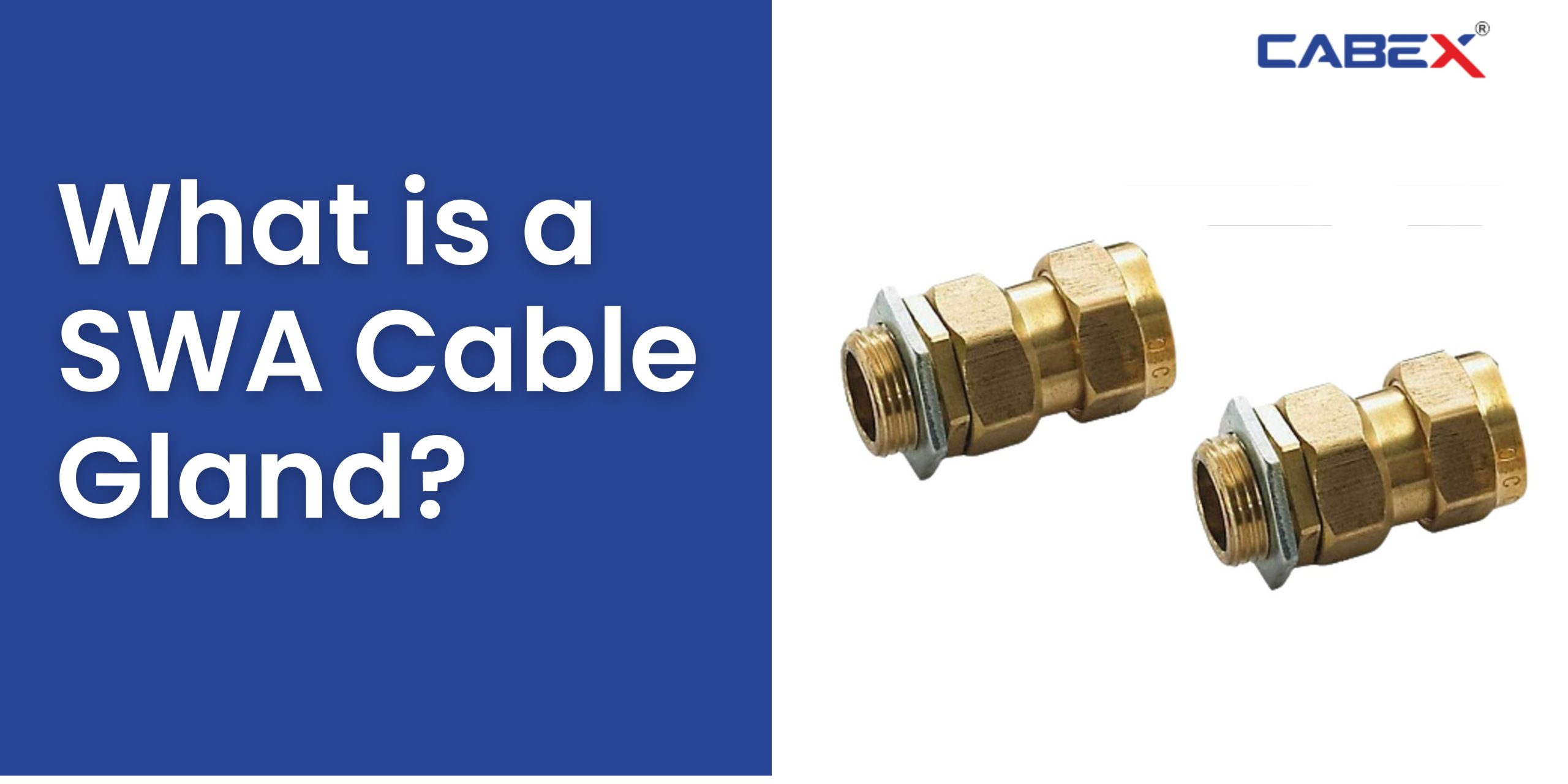Introduction:
If you are involved in electrical installations or have an interest in understanding different components of electrical systems, you may have come across the term SWA cable gland. But what exactly is a SWA cable gland? In this article, we will delve into the world of SWA cable glands, exploring their purpose, construction, installation, and importance in electrical applications. So, let’s unravel the mystery behind SWA cable glands and gain a comprehensive understanding of their role in electrical systems.
Understanding SWA Cable Glands
What is a SWA Cable Gland?
A SWA cable gland, also known as a steel wire armored cable gland, is a mechanical device used to secure and terminate steel wire armored cables (SWA cables). SWA cables are commonly used in various electrical installations, including industrial, commercial, and residential applications. The purpose of a SWA cable gland is to provide effective cable entry and retention, ensuring the cables are securely connected to the equipment, enclosures, or junction boxes.
Construction and Components
Components of a SWA Cable Gland
A typical SWA cable gland consists of several components, including:
- Gland Body: The main body of the gland, usually made of brass, aluminum, or stainless steel.
- Locknut: A threaded nut that secures the gland to the equipment or enclosure.
- Sealing Ring: A rubber or neoprene ring that provides a watertight seal around the cable.
- Clamping System: The clamping mechanism, consisting of a series of jaws or serrations, grips the steel wire armor of the cable.
- Entry Thread: A threaded part that allows the cable to be inserted and secured within the gland.
Purpose of SWA Cable Glands
Secure Cable Termination
The primary purpose of a SWA cable gland is to securely terminate SWA cables. The clamping system within the gland grips the steel wire armor, providing strain relief and preventing the cable from being pulled out of the equipment or enclosure. This ensures a reliable and safe electrical connection.
Protection Against Environmental Factors
SWA cable glands also offer protection against environmental factors, such as moisture, dust, and ingress of foreign objects. The sealing ring creates a tight seal around the cable, preventing the entry of water, gases, or other contaminants into the electrical system.
Installation Process
Installing a SWA Cable Gland
The installation process of a SWA cable gland involves the following steps:
- Prepare the cable by removing the outer sheath and any insulation, exposing the steel wire armor.
- Slide the sealing ring onto the cable, ensuring it sits at the correct position.
- Insert the cable through the entry thread of the gland until the steel wire armor is aligned with the clamping system.
- Tighten the clamping system, securely gripping the steel wire armor.
- Fasten the gland body onto the equipment or enclosure using the locknut, ensuring a firm connection.
Importance in Electrical Systems
Ensuring Electrical Safety
SWA cable glands play a crucial role in maintaining electrical safety. By securely terminating the cables, they prevent accidental disconnections, reducing the risk of electrical faults, short circuits, and potential hazards.
Mechanical Strength and Durability
Due to their construction and design, SWA cable glands provide mechanical strength and durability. They are designed to withstand external forces, such as vibration or tension, ensuring the cables remain intact and properly connected over an extended period.
Maintenance and Safety Considerations
Regular Inspection and Maintenance
To ensure the continued functionality and safety of SWA cable glands, it is essential to conduct regular inspections. Check for signs of wear, damage, or deterioration of components, such as the sealing ring and clamping system. Any faulty or compromised glands should be replaced promptly.
Compliance with Standards and Regulations
When selecting and installing SWA cable glands, it is crucial to adhere to relevant standards and regulations. These standards provide guidelines on the proper selection, installation, and use of cable glands, ensuring compliance with safety requirements.
Conclusion
In conclusion, SWA cable glands are essential components in electrical installations that provide secure cable termination and protection against environmental factors. They play a significant role in maintaining electrical safety and ensuring reliable connections. By understanding their construction, purpose, and installation process, you can make informed decisions when selecting and utilizing SWA cable glands in your electrical systems.
Remember, using SWA cable glands should always follow industry best practices and adhere to applicable safety standards. By doing so, you can ensure the integrity of your electrical installations and contribute to a safe and reliable electrical environment.
FAQ:
Yes, SWA (Steel Wire Armored) cable typically needs to be glanded. Glanding refers to the process of using cable glands to secure and protect the cable, providing a tight seal against moisture and other external elements.
SWA stands for Steel Wire Armored cable, which is a type of electrical cable with a protective layer of steel wires for added strength. AWA stands for Aluminum Wire Armored cable, which uses aluminum wires instead of steel.
Cable SWA (Steel Wire Armored) has a single layer of steel wires for mechanical protection. Cable SWB (Steel Wire Braid) has a braided layer of steel wires for mechanical protection. Both types enhance cable durability and are commonly used in electrical installations.
SWA (Steel Wire Armored) cable consists of a core of electrical conductors, insulation layers, and steel wire armor for mechanical protection. It is commonly used for power distribution in various applications, including underground installations and outdoor environments.
The thickness of SWA (Steel Wire Armored) cable can vary depending on the specific application and size. It is available in various diameters, ranging from around 7mm to 61mm or more.






